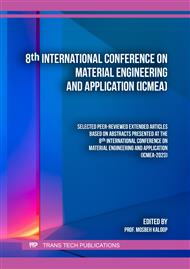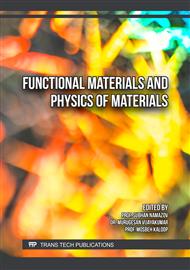p.3
p.13
p.25
p.31
p.49
p.57
p.73
p.87
Influence of Electrolyte Concentration on the Electrochemical Behavior of Copper Hexacyanoferrate as an Active Material for Zinc-Ion Batteries
Abstract:
This study investigates the impact of electrolyte concentration on the electrochemical behavior of copper hexacyanoferrate (CuHCF), a promising active material for aqueous zinc-ion battery electrodes. Cyclic voltammetry, charge-discharge measurements, and X-ray diffraction analysis were employed to assess the electrochemical reactions and structural integrity of the CuHCF electrode under varying electrolyte concentrations. The results revealed a significant influence of electrolyte concentration on the electrochemical performance of the CuHCF electrode. Specifically, the charge-discharge capacity exhibited an initial increase as the electrolyte concentration increased from 1.0 to 2.0 mol dm‒3, followed by a subsequent decrease. This decrease in capacity was attributed to the occurrence of an electrode/electrolyte interfacial reaction in the low-potential region of 0.0–0.3 V, coupled with structural changes in the CuHCF active material. Notably, these findings underscore the strong correlation between the electrochemical performance of the CuHCF electrode and the hydration structure of zinc ions, as well as the pH of the electrolyte solution. Thus, optimizing the electrolyte composition holds significant potential for enhancing the performance of aqueous zinc-ion batteries employing CuHCF electrodes.
Info:
Periodical:
Pages:
25-30
Citation:
Online since:
March 2024
Authors:
Keywords:
Price:
Сopyright:
© 2024 Trans Tech Publications Ltd. All Rights Reserved
Share:
Citation:



